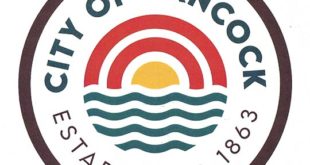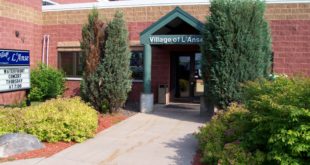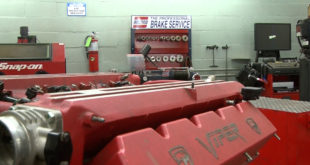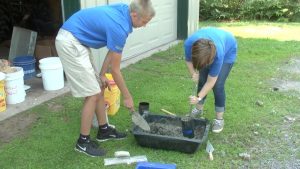 A group of young innovative thinkers are talking a hands-on approach to solving a long time problem in the Keweenaw. The trio known as the Whiz Kids may have come up with a modern day use for stamp sands and could soon be using it as a construction material.
A group of young innovative thinkers are talking a hands-on approach to solving a long time problem in the Keweenaw. The trio known as the Whiz Kids may have come up with a modern day use for stamp sands and could soon be using it as a construction material.
Many of the shores in the Keweenaw have black beaches from what we call stamp sand. The discarded soil and pebbles were left behind from the copper extraction process and with few environmental regulations in place at that time, mining companies simply dumped this material on the shores of Lake Superior, or other bodies of water such as Torch Lake.
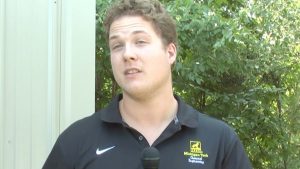 MTU Chemical Engineer Ryan Knoll said, “In Gay, Michigan, the stamp sand has actually migrating over a local fish spawning grounds which has a large impact on the fishing in that area.”
MTU Chemical Engineer Ryan Knoll said, “In Gay, Michigan, the stamp sand has actually migrating over a local fish spawning grounds which has a large impact on the fishing in that area.”
In recent months, the Department of Natural Resources has made attempts at saving that fishing area from the drifting sand, but they have also asked for public input to offer solutions. These three kids have accepted that challenge and are currently testing their theories.
 “Their goal is to make concrete using stamp sand as part of the fine aggregate,” said Gretchen Hein of Michigan Technological University.
“Their goal is to make concrete using stamp sand as part of the fine aggregate,” said Gretchen Hein of Michigan Technological University.
Concrete is used worldwide for building just about anything and if the stamp sand can be used in the mix, there are plenty of things that can be made with it.
 “It would be good for sidewalks, or back roads, or walls, and stuff like that. Concrete pillars,” stated Beau Hakala, who is also on the eCybermission Team.
“It would be good for sidewalks, or back roads, or walls, and stuff like that. Concrete pillars,” stated Beau Hakala, who is also on the eCybermission Team.
The group is experimenting with different samples and mixtures.
 “We are pouring different types of stamp sand. We’re doing one from Lake Linden, one from Gay, and just regular beach sand. We’re trying to figure out what types of stamp sand mixes the best with the concrete,” said Katie Griffin, who is on the eCybermission Team.
“We are pouring different types of stamp sand. We’re doing one from Lake Linden, one from Gay, and just regular beach sand. We’re trying to figure out what types of stamp sand mixes the best with the concrete,” said Katie Griffin, who is on the eCybermission Team.
“Lake Linden stamp sand was crushed multiple times. It’s a finer aggregate than Gay stamp sand is, which is the other one we are using. And then we’re testing a control with beach sand to see how the three measure up in concrete,” said Knoll.
Once the test samples are cured, the team takes them into the lab for strength testing and data analysis.
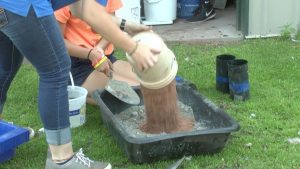 “What they noticed is that Lake Linden stamp sand was slightly stronger than the Gay. So the stronger the concrete is, the more applications it has out in the field,” said Hein
“What they noticed is that Lake Linden stamp sand was slightly stronger than the Gay. So the stronger the concrete is, the more applications it has out in the field,” said Hein
Before adopting the material as a regularly used aggregate, more testing would be needed.
“We would further look into different ways to increase its strength if it proved to be good,” said Hakala.
Another way that the material is currently being recycled is by county road commissions who have been spreading the sand on snow covered roads in the winter months. This provides motorists with additional traction, but that only offers a seasonal solution.
“If this research does pan out and this gets more commercially implemented, you could use many tons of stamp sand and take them out of those areas and at least prevent it from migrating farther,” Knoll added.
 Keweenaw Report Your Source for Local News and Sports
Keweenaw Report Your Source for Local News and Sports


